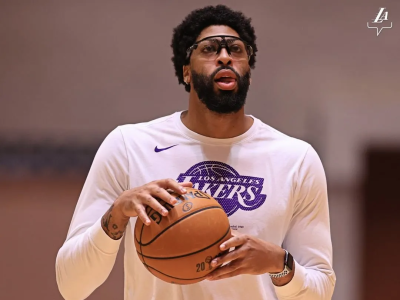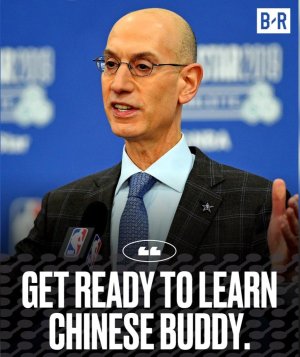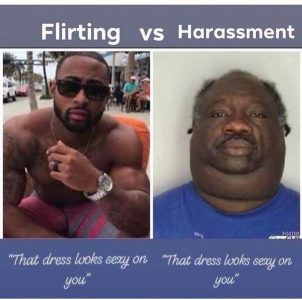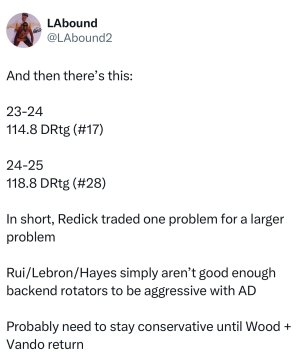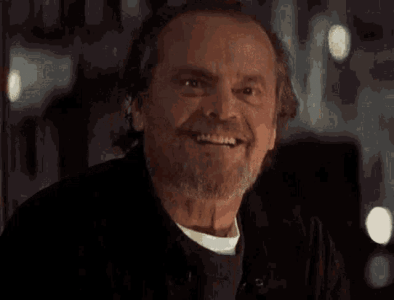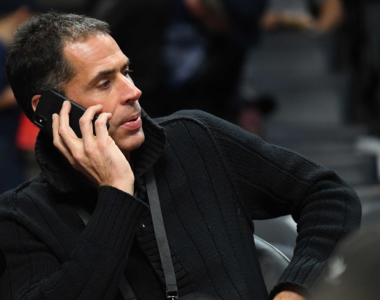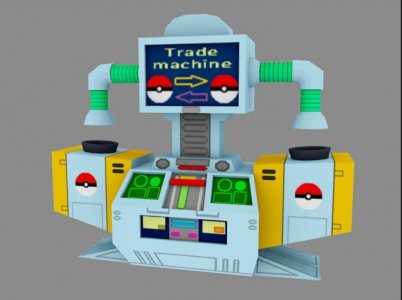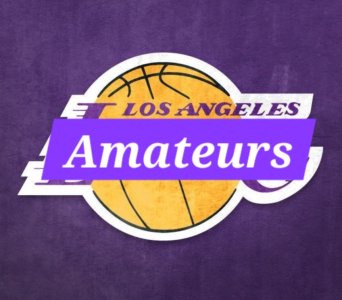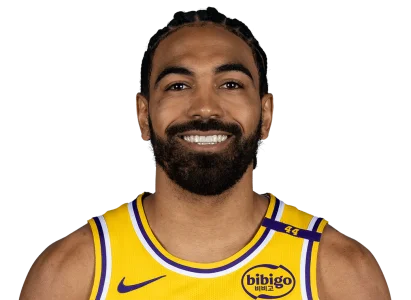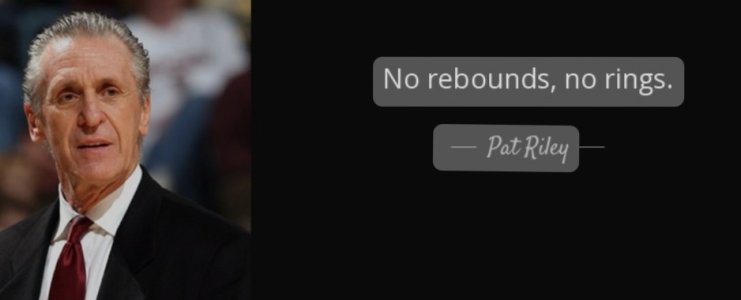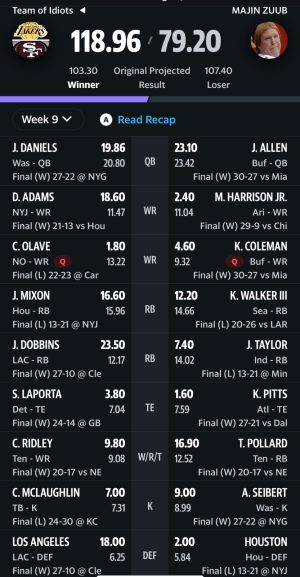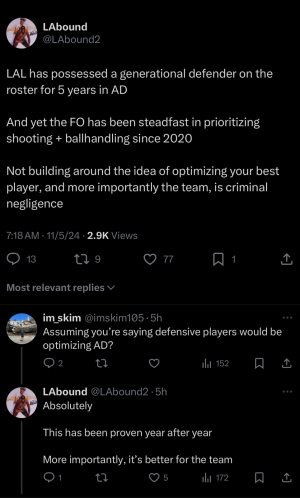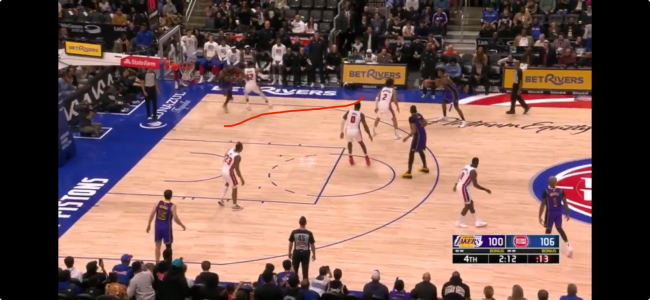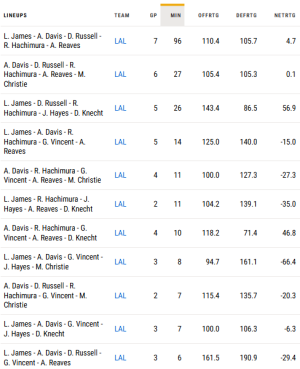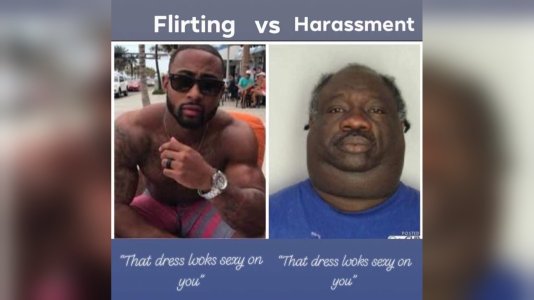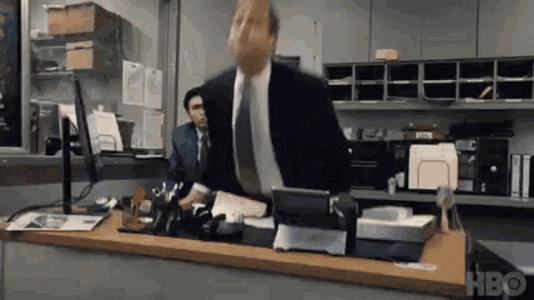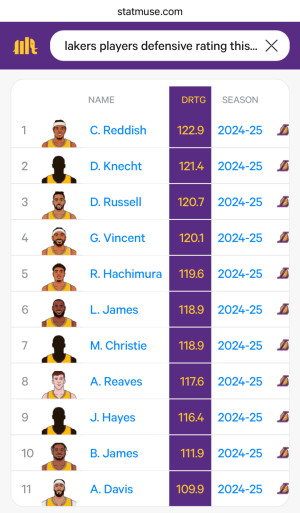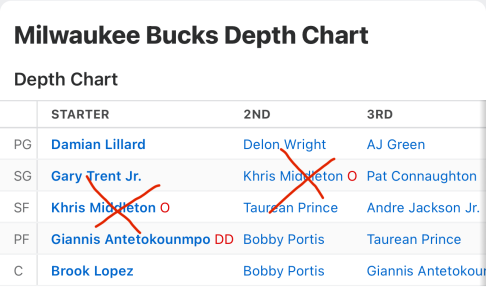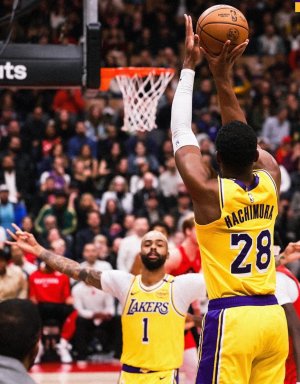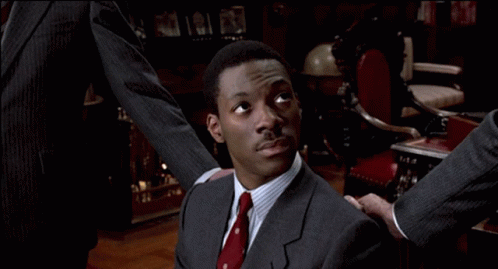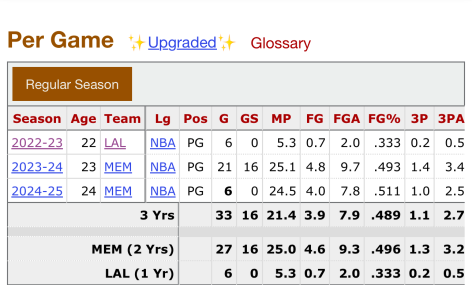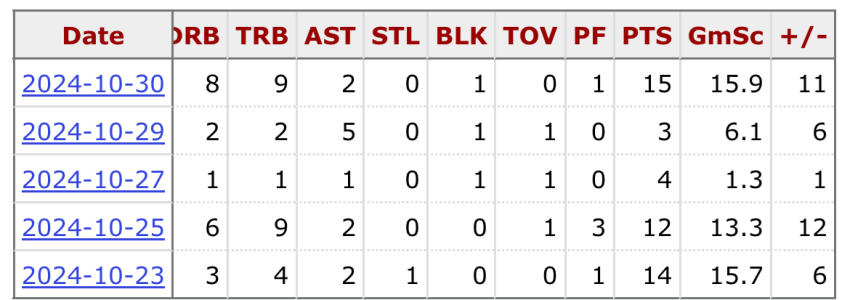The 10 most important Los Angeles Lakers storylines to monitor this season
The Lakers are entering the 2023-24 season with a quiet confidence and optimism they haven’t had in years.
Most of the core of the group that made the 2023 Western Conference finals is back, as the Lakers extended the contracts of Anthony Davis and Jarred Vanderbilt and re-signed Austin Reaves, Rui Hachimura and D’Angelo Russell. They also made subtle but significant rotation upgrades in the form of players such as Gabe Vincent, Taurean Prince and Christian Wood.
“We were very intentional about the versatility this roster has, the depth that the roster has,” Lakers vice president of basketball operations and general manager Rob Pelinka said last week. “I think there’s upgrades of spacing and shooting, kind of top to bottom.”
With training camp underway, here are 10 storylines entering the 2023-24 season.
1. Anthony Davis’ jump shooting
Aside from the health of the Lakers’ principal players, Davis’ jumper is the biggest key to unlocking Los Angeles’ ceiling. He simply hasn’t shot the same from the perimeter since the 2019-20 season. He’s still an excellent offensive player, but back then, there was no way to contain him besides just trying to force a miss. Now, teams will happily concede jumpers.
It’s not just that Davis has regressed as a shooter. It’s the chain reaction of that regression, in that he attempts fewer jumpers, negatively impacting Los Angeles’ offensive spacing. His 3-point attempts per 100 possessions have decreased each season since 2019-20 (from 4.9 to 4.2 to 2.4 to 1.

. His 3-point percentage has also gradually declined from 33 percent in 2019-20 to 25.7 percent in 2022-23.
One encouraging sign from this past season: Davis positively regressed to the mean as a midrange shooter, making 40.6 percent of his attempts, his best mark with the Lakers. Still, his average field goal attempt was from 8.2 feet, his shortest distance since he was a rookie in New Orleans in 2012-13. Davis will always be at his best in the paint and at the rim, but there needs to be a better balance, unless he’s a full-time center surrounded by other accurate long-range marksmen.
The buzz in the Lakers’ training facility, started by the low-key Reaves of all people, is that Davis’ shot is back. Davis downplayed the noise while admitting it only matters if it translates to the games.
“Just getting back to being a threat at all three levels,” Davis said. “Not sure where it’s at until we get into practices and games. Anybody can shoot in workouts and make shots when there’s no pressure on them. So, we’ll see when camp comes around and preseason games and throughout the course of the regular season. But I feel good.”
2. How often will L.A. use two-big lineups?
Davis’ jump shot transitions directly into the Lakers’ public desire of deploying more two-big lineups, though I’m skeptical of their effectiveness. If Davis can return to his 2019-20 shooting form, playing him with another big can work. Otherwise, I think Davis remains at his best at center, where he’s logged approximately 89 percent of his minutes over the past two seasons, according to Cleaning the Glass.
Davis revealed at media day that he and Darvin Ham have yet to iron out Davis’ positional role. Davis did, however, offer a detailed breakdown of how Jaxson Hayes and Christian Wood complement the Lakers.
“Jaxson’s very athletic,” Davis said. “A rim protector. A lob threat. Kind of like JaVale (McGee). C-Wood is a scorer. Can play at all three levels of the floor. C-Wood’s a little different from Dwight (Howard), but they’re two great bigs that can complement me very well. Me and Darv, we haven’t had a chance to sit down yet to figure out my role between the four and five and things like that. But having those two guys alongside me should be a great thing.”
Will Ham use these two-big lineups sparingly? Only against certain opponents, like Denver with Nikola Jokić and Philadelphia with Joel Embiid? Or will those units be the foundation of the team’s starting and/or closing lineups? If so, will Wood start? These are all important questions that should be answered soon.
3. Superstar workload and health
Upon returning in late March from his foot injury, LeBron James suggested he would keep it quiet if he had offseason surgery. James offered no such clarity at media day. He admitted his primary offseason focus was treating his torn tendon in his right foot, but did not get into specifics.
The last time James was fully healthy, he was playing like a clear All-NBA second-team forward. That version of James, coupled with the version of Davis the Lakers had in the playoffs, is the best duo in the NBA. That’s a championship foundation.
But there’s no guarantee James or Davis can stay healthy for a full season. Frankly, it hasn’t happened in years. Perhaps the Lakers are due for some injury fortune.
They also plan to monitoring both stars’ workload and minutes. And if those two can stay healthy for a full season, or are at least healthy at the right time, they’ve proven they can lead deep playoff runs.
4. Is Austin Reaves ready to be the full-time third option?
Reaves’ new contract cements him as a franchise cornerstone and the Lakers’ third-best player. To some degree, the Lakers’ championship aspirations are built on the premise that Reaves will continue improving and establish himself as one of the game’s best third options. If his development stalls, the Lakers likely top out as a conference semifinals or finals team. That’s a big difference.
The Lakers plan to using Reaves more at point guard this season, his natural position. The hope is that decreases the burden on James and Davis and helps the Lakers’ spacing with shooters like D’Angelo Russell, Gabe Vincent and Taurean Prince working off the ball. Russell, who is the nominal starting point guard, will also get his fair share of touches. But Reaves’ development has the power to swing both the Lakers’ ceiling and floor.
“I feel really comfortable,” Reaves said of playing with the ball in his hands more this season. “Point guard is the position I’ve played my whole life until college and then obviously the last couple of years. I feel like that’s something that never leaves you. Me and Darv have had conversations about that as well, just having a little bit more opportunity to initiate. It doesn’t really necessarily mean making a play every possession. Just kind of getting us into what we need to get into.”
5. Christian Wood, X-factor
The Lakers don’t need Wood to have a successful season. After all, they made the Western Conference finals last year without a traditional backup big man in their playoff rotation. The undersized combination of Davis, James, Hachimura and Vanderbilt can hold down the paint in many matchups.
However, if the gamble to sign the well-traveled Wood works out, the idealized version of him would undoubtedly be a useful weapon and ceiling-raiser. Wood is arguably the most offensively skilled big man complement the Lakers have had in the James-Davis era. (Kyle Kuzma was a purer scorer, but Wood has sneakily impressive passing instincts.) It’s within the range of reasonable outcomes that Wood becomes the Lakers’ fourth-most important offensive player behind James, Davis and Reaves. The Lakers need to figure out a way to get him to be consistently passable defensively to capitalize on his offensive talent.
He’s one of the biggest X-factors in any contender’s rotation.
6. D’Angelo Russell’s future
Russell waived the implied no-trade clause that normally comes with a one-year contract. Doing so provided him more guaranteed money in exchange for Los Angeles maintaining the flexibility to deal him at the upcoming February trade deadline.
“That was a new rule,” Russell said. “That was something new implemented into the contracts. It worked out for both parties.”
Odds are that if the Lakers make a splashy move in the regular season, it will likely include Russell’s contract due to its monetary value in matching salary (about $17.3 million) and length (one year with a player option for 2024-25). There are other avenues the Lakers can use to improve the roster. For example, the contracts of Hachimura, Vincent and Prince each should have value to other teams come February. But moving Russell seems to be the cleanest and most realistic path to upgrading the rotation.
Russell is a talented scorer and playmaker who provides a lot of value in the regular season as a tertiary option who can soak up more usage if James or Davis misses time. There’s a chance the revived partnership is enough of a success for the Lakers to retain him beyond the trade deadline. But the Lakers’ uncertainty with Russell stems from his recent postseason struggles, and they may not be willing to risk another playoff disappointment.
7. Year 2 of Darvin Ham
Ham has established himself as one of the NBA’s better locker-room managers in a short time. He artfully navigated the Russell Westbrook situation, talking up Westbrook publicly but making the difficult decisions when necessary, like moving Westbrook to the bench and sitting him during fourth quarters. Ham instilled a special kind of resilience in his players as they weathered their 2-10 start, dramatic trade deadline makeover and being outside the Play-In Tournament for a large stretch of the season. He orchestrated the Lakers’ post-trade deadline defense impressively, guiding them to a top-two ranking and a conference finals run.
That said, Ham’s tendencies and preferences remain somewhat unclear given the constraints of last season’s roster. He often deployed lineups that featured three guards, even when it didn’t make much sense to play that small. The 2023-24 Lakers roster isn’t built to play small, though one can envision Ham using Russell, Reaves and Vincent together, including, potentially, at the end of games.
Ham has tools at his disposal to start this season that he didn’t have for much of last year. We will learn much more about him as a head coach and, specifically, as a tactician.
8. Max Christie’s leap
Over the summer, Christie demonstrated the type of growth that front offices dream of for their second-year prospects. He displayed new skills with the Lakers’ summer league squad, particularly as an on-ball shot creator and foul drawer. He doesn’t project to use those abilities much on the main roster, but remember that when last season started, Reaves wasn’t projected for as large of a role as he eventually assumed. Christie has the potential to make a leap himself.
“The goal is just to translate that over into training camp, preseason games, regular season games,” Christie said. “I think I’ll have a slew of opportunities just to sort of showcase my talent and sort of be a good part of this team and play a good role on this team to help us eventually win a championship.”
Christie is battling with Prince and Cam Reddish for backup shooting guard and small forward minutes. Given Prince’s contract and track record, Christie versus Reddish is the more realistic battle, with Christie holding the early edge because of his superior 3-point shooting and defense.
9. Can the Lakers hit enough 3s?
The Lakers ranked 24th or worse in 3-point percentage, makes and attempts last season, which is a significant problem for a contender in the modern NBA. They have already proven to be the exception to the modern rule that champions are elite 3-point shooting teams, ranking in the bottom half of the league in all three metrics in 2019-20. But there’s a difference between being below average from 3 and close to the bottom five.
On paper, this Lakers roster projects to have arguably the most supplemental shooting in the James-Davis era. Wood and Prince are near-40 percent shooters. Vincent is a high-volume gunner who hits enough to cause defenses to respect him. Russell and Reaves return. Christie’s role should grow. Davis and James can’t shoot much worse than last season.
The Lakers don’t have enough shooting to win a shootout with, say, the Suns, Nuggets or Warriors. They have other strengths that those teams don’t, but they need enough firepower to try to keep defenses (relatively) honest when packing the paint. On paper, this group appears to have reached that threshold, but there’s a chance the Lakers still need to add a shooter at the trade deadline or in the buyout market.
10. Rui Hachimura’s progress
The best anecdote from the beginning of the season has been the budding mentorship between James and Hachimura.
Lakers assistant coach Phil Handy, who has been tight with James for years and worked closely with Hachimura last season, suggested that Hachimura train with James as much as possible this offseason. Whenever James was working out in Los Angeles, Hachimura was right there, following his every move. James compared the dynamic to Daniel LaRusso and Mr. Miyagi in “The Karate Kid.”
“It was great,” Hachimura said. “I appreciate it for him to let me work out with him. It was a great experience for me. And just learning from him, of course on the court, but off the court, just taking care of his body. Weight room. All kinds of stuff. But just talking about stuff, basketball stuff, I learned a lot from him.”
Because of how great he was in the playoffs, it’s easy to forget Hachimura had an underwhelming regular season with the Lakers following January’s trade with Washington. He broke out in the postseason, particularly as a 3-point shooter, which had not been a strength over the course of his four-year career. Hachimura’s 3-point percentage skyrocketed from 29.6 percent in the regular season with the Lakers to 48.7 percent in the playoffs. While the latter percentage is clearly unsustainable, Hachimura referenced his 2021-22 season in Washington, when he shot 44.7 percent on 3s over 42 games, as evidence of his beyond-the-arc capabilities.
“I think it’s a momentum thing,” Hachimura said of his shooting. “Especially for me, bigger games for me, I get my strengths up. So, since I was a kid, big games, I love those big games. So that’s why it happened, I feel like. It wasn’t really anything technically that changed. It was just the momentum of it.”
BIG LEEMELONE so they're gonna drag this out, keep everyone in suspense, and make everyone guess all season long as to who is the fifth starter each and every game


 . His 3-point percentage has also gradually declined from 33 percent in 2019-20 to 25.7 percent in 2022-23.
. His 3-point percentage has also gradually declined from 33 percent in 2019-20 to 25.7 percent in 2022-23.





